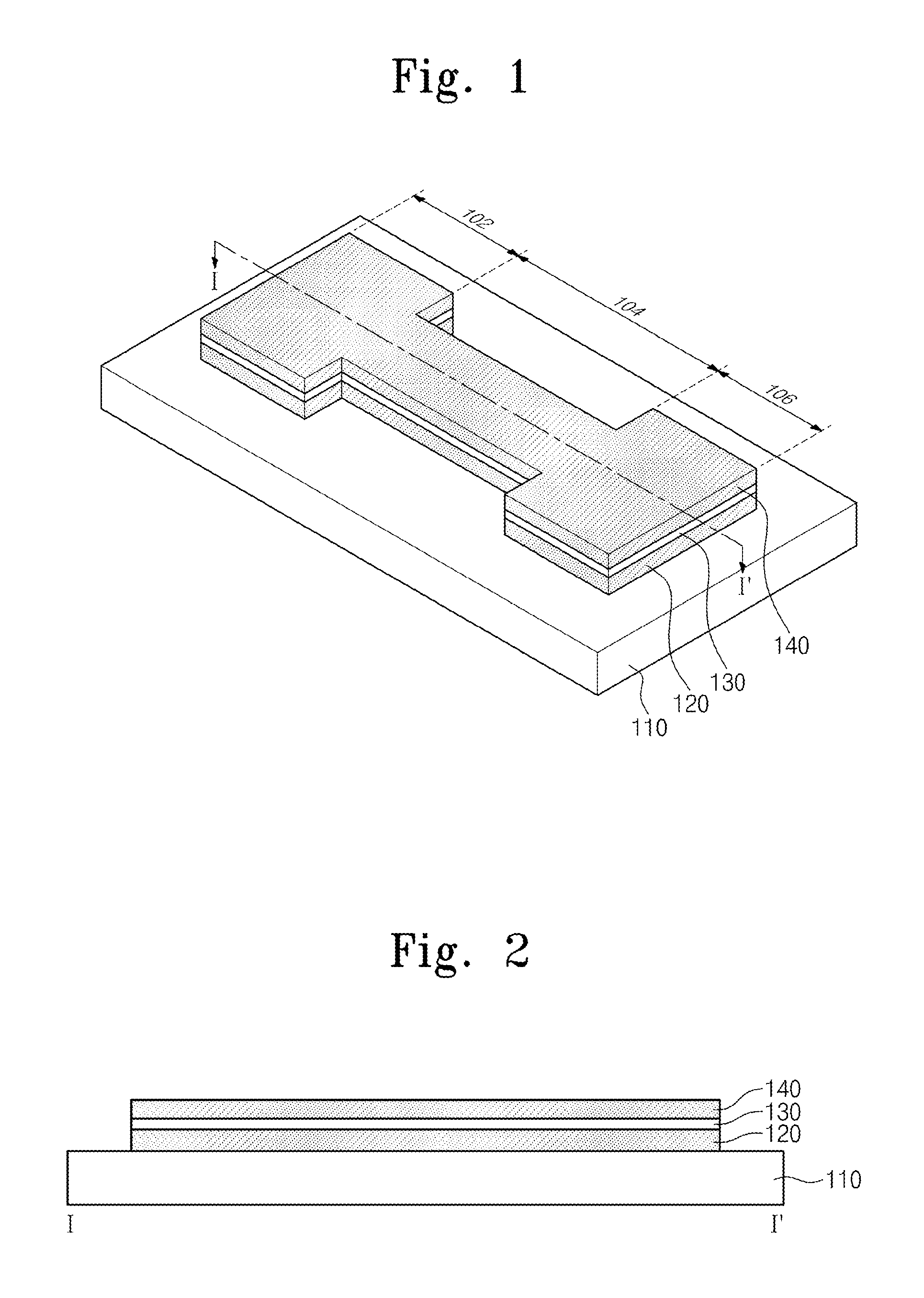Graphene nanoribbon sensor
a graphene nanoribbon and sensor technology, applied in the field of sensors, can solve the problems of low conductivity of graphene oxide, low sensing sensitivity, and small defects of graphene, and achieve the effect of high sensing sensitivity
- Summary
- Abstract
- Description
- Claims
- Application Information
AI Technical Summary
Benefits of technology
Problems solved by technology
Method used
Image
Examples
Embodiment Construction
[0017]Hereinafter, preferred embodiments of the inventive concept will be described in detail with reference to the accompanying drawings in such a manner that the technical idea of the inventive concept may easily be carried out by a person with ordinary skill in the art to which the invention pertains. The present disclosure may, however, be embodied in different forms and should not be construed as limited to the embodiments set forth herein.
[0018]In the drawings, anything unnecessary for describing the present disclosure will be omitted for clarity, and also like reference numerals in the drawings denote like elements.
[0019]In the specification and in all the claims, when it is described that one comprises (or includes or has) some elements, it should be understood that it may comprise (or include or has) only those elements, or it may comprise (or include or have) other elements as well as those elements if there is no specific limitation.
[0020]It will be understood that when a...
PUM
| Property | Measurement | Unit |
|---|---|---|
| width | aaaaa | aaaaa |
| width | aaaaa | aaaaa |
| dielectric | aaaaa | aaaaa |
Abstract
Description
Claims
Application Information
 Login to View More
Login to View More - R&D
- Intellectual Property
- Life Sciences
- Materials
- Tech Scout
- Unparalleled Data Quality
- Higher Quality Content
- 60% Fewer Hallucinations
Browse by: Latest US Patents, China's latest patents, Technical Efficacy Thesaurus, Application Domain, Technology Topic, Popular Technical Reports.
© 2025 PatSnap. All rights reserved.Legal|Privacy policy|Modern Slavery Act Transparency Statement|Sitemap|About US| Contact US: help@patsnap.com


